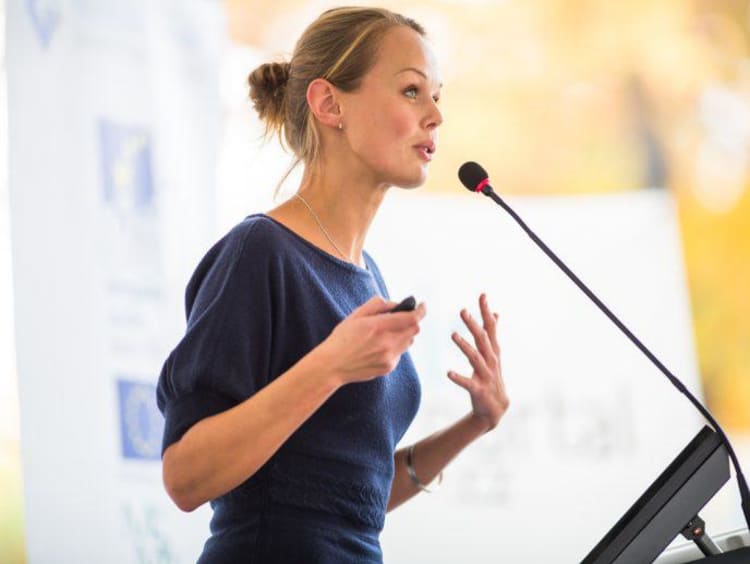What Doctoral Learners Should Know About Presenting at Conferences

Public speaking isn’t a talent that comes naturally to many people. Just like any other skill, it takes practice and a willingness to fail and learn from mistakes. As a doctoral learner, you may have the opportunity to present your work at an academic conference. Give yourself plenty of time to prepare and practice your presentation until it’s polished.
Attending Other Conferences
Ideally, your preparation for your first conference presentation should begin before you even plan on giving a talk. When you enter a doctoral program, make a habit of attending all academic conferences relevant to your field that are available to you. You’ll get a better understanding of what to expect and you can gauge the effectiveness of various presentation styles. As a result, you’ll feel more confident when it’s your turn.
Joining a Speaking Club
You might not feel naturally confident and competent as a public speaker. That’s perfectly okay. You can work at it. Join a local speaking club, such as a Toastmasters group. (If you can’t find one in your area, consider forming an informal speaking group with fellow doctoral students.) Clubs like Toastmasters will give you plenty of practice, as well as insight and feedback from others.
Using Visuals
Visuals are a great way to enhance your presentation. And for nervous public speakers, visuals are like an insurance policy. They can keep you on track, remind you of which information you’re discussing in which order and as an added bonus, they give your audience something to look at besides you. It’s fine to use PowerPoint—you don’t need to get too fancy with your visuals. Follow these general guidelines when putting together your slides:
- Keep lots of white space in each slide—don’t try to cram in too much info.
- Use contrasting colors that are easy to read, like black type on a white background.
- Put everything in a very large font size.
- Use bullet points and incomplete sentences.
Don’t be afraid to add some lighthearted, relevant humor, like a cartoon. Your audience will thank you for it if it’s done in good taste. Most public speakers try to use about one slide per minute of the presentation.
Practicing Your Presentation
Do multiple practice runs. Aim for a mixture of solo practice presentations (talking to only yourself) and presentations in front of others. Enlist your family, friends, colleagues—anyone who is willing to listen to you. Time yourself so you have a general idea of whether you’re talking too slow or too fast, or if you’re trying to cram too much information into your allotted time. During each mock presentation, you should practice the following:
- Make eye contact with your audience. Or at least, look up regularly and direct your gaze to alternating sides of the room, front and back.
- Go through your slides during each mock presentation. Make sure they’re in the right order.
- Find something to do with your hands. If you’re a natural gesticulator, feel free to talk with your hands during your presentation. Otherwise, you could clasp your hands together at your waist or place them on the podium if you’ll have one available.
Grand Canyon University offers an intellectually stimulating environment for our doctoral students. Are you ready to take the next step in your academic career? Get started today by clicking on the Request More Information button, and exploring the available degree programs in our College of Doctoral Studies.
The views and opinions expressed in this article are those of the author’s and do not necessarily reflect the official policy or position of Grand Canyon University. Any sources cited were accurate as of the publish date.


